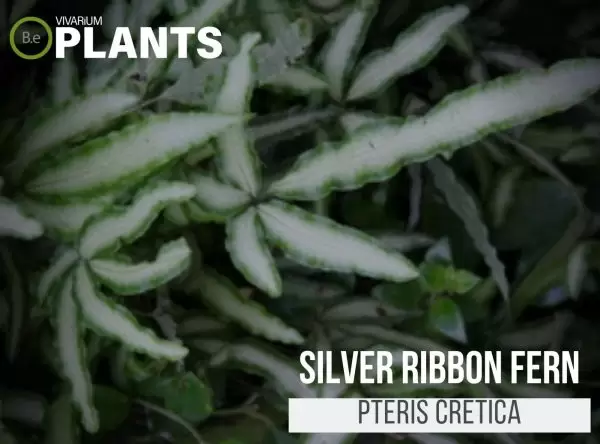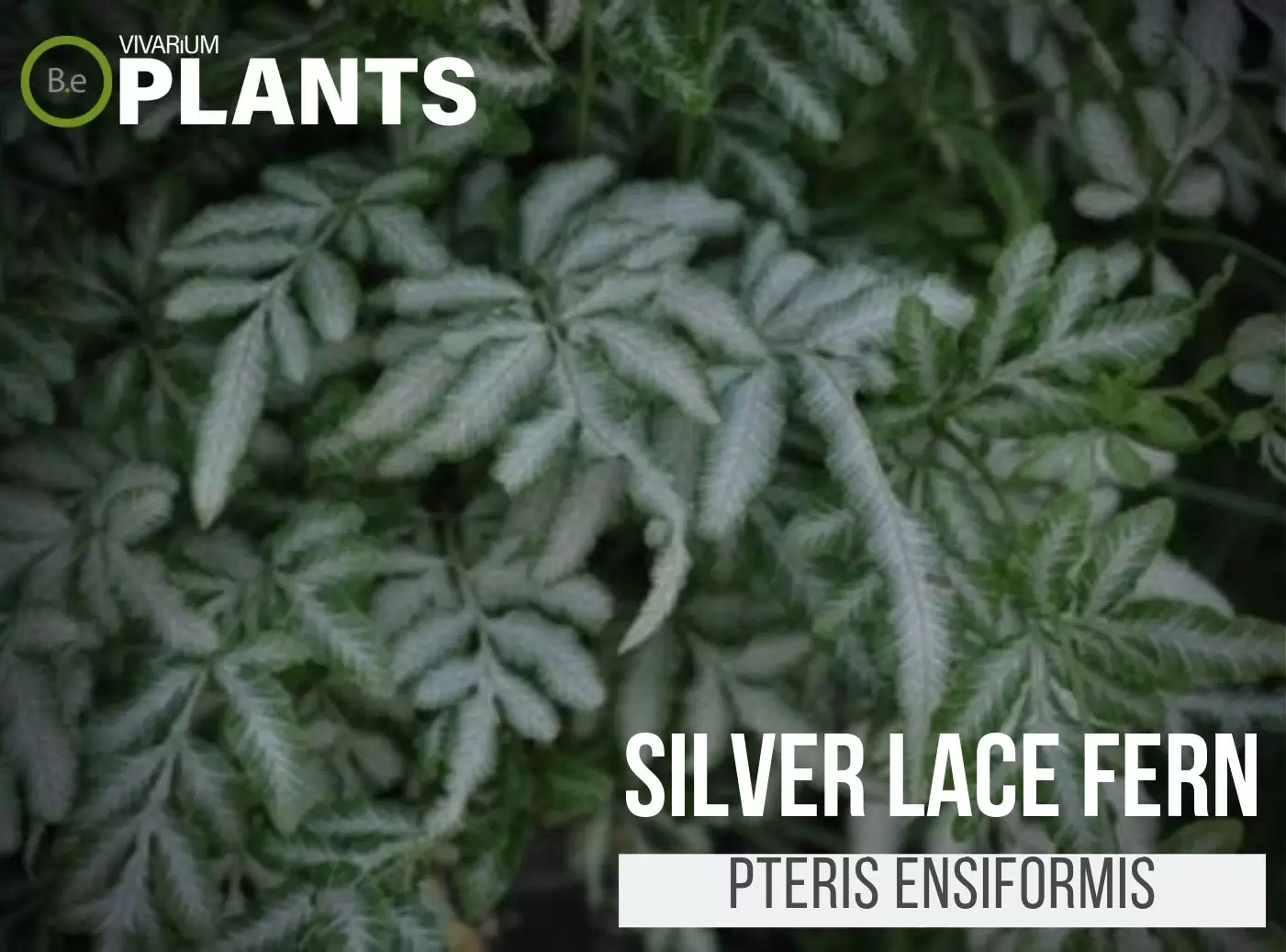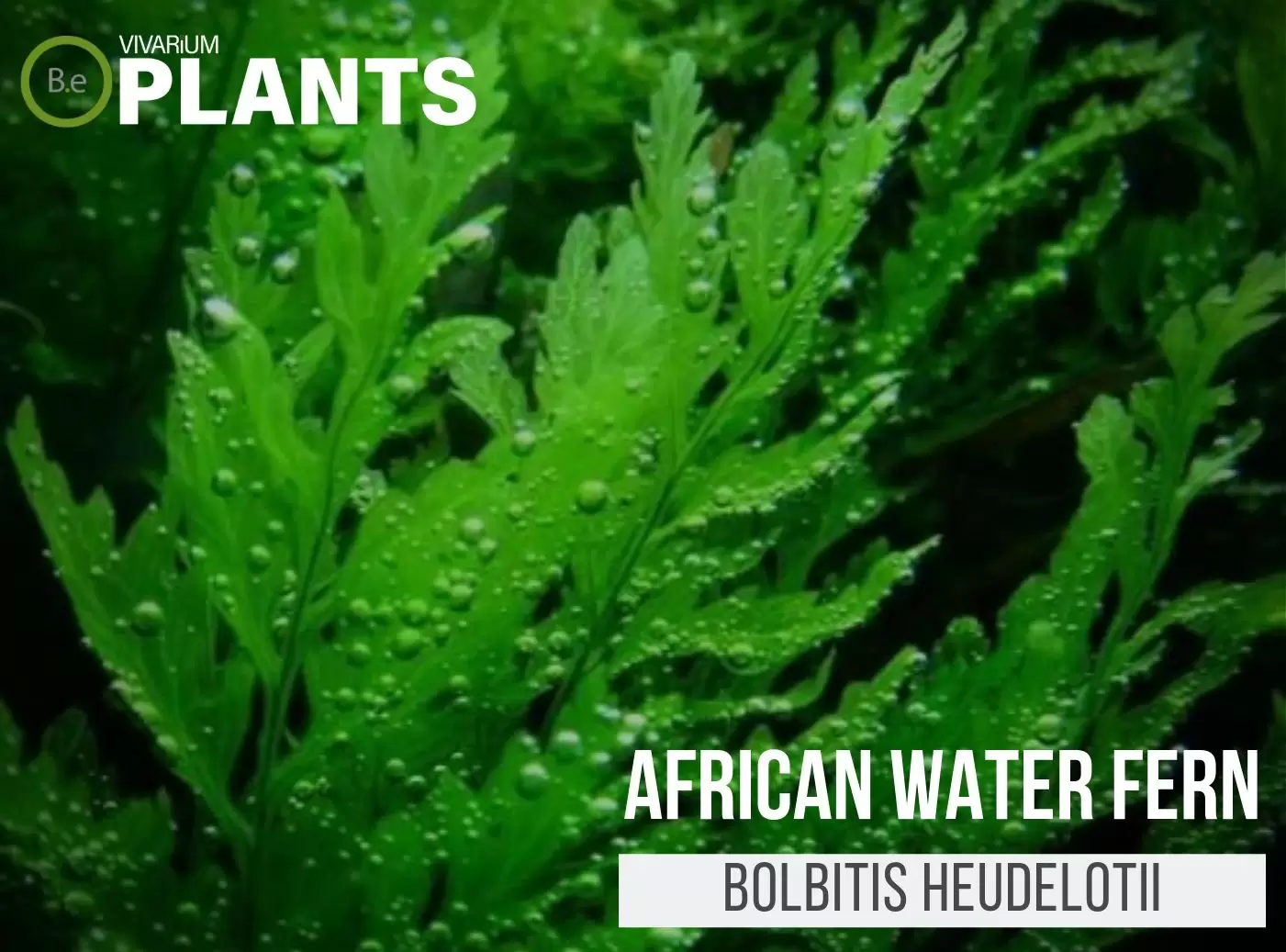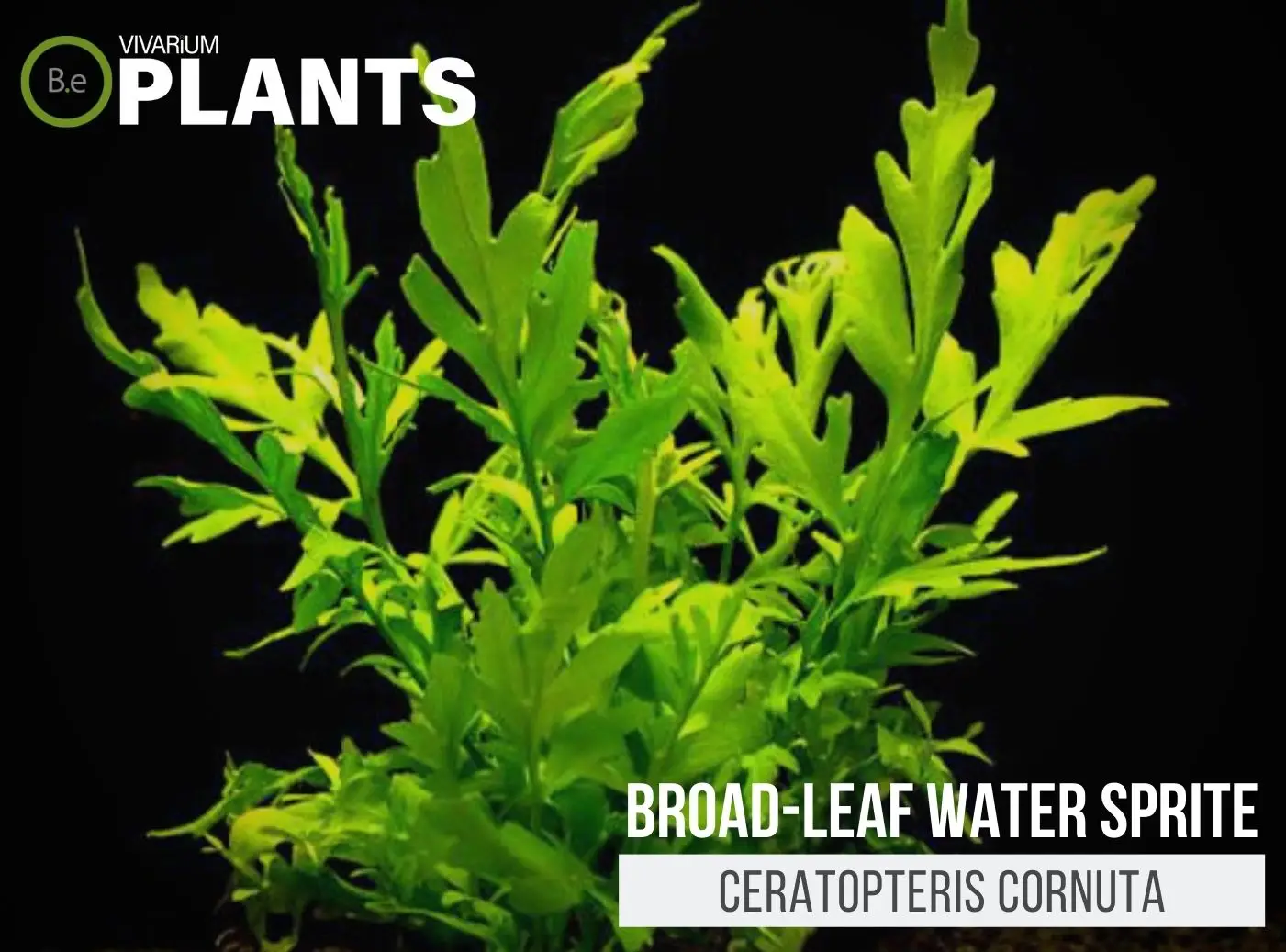Silver Ribbon Fern (Pteris cretica) is a distinct-looking fern with quite a graceful appearance.
Unlike some other ferns, this plant displays a variety of colors that immediately attracts the spectator’s attention.
Aside from its looks, Pteris cretica is also one of the most tolerant and low-maintenance requirement ferns.
They flourish extremely well in an indoor environment, which makes them a perfect addition to a terrarium fern.
This article will provide a complete care guide with all there is to know about this Pteridaceae.
| Quick Stats: | |
|---|---|
| Scientific Name | Pteris cretica |
| Common Name | Variegated Table Fern, Cretan Brake Fern, Ribbon Fern, Silver Ribbon Fern |
| Family Name | Pteridaceae |
| Habitat | Subtropical, Rocky Woodland |
| Temperature | 55°F to 75°F |
| Height | 1 to 2.5 feet tall |
| pH | 6.5 to 7.8 |
| Lighting | Bright |
What Is Silver Ribbon Fern?
Pteris cretica is a species of evergreen plant that belongs to the Pteridaceae family.
The general name of Pteris is derived from the Greek term for “feather”, which refers to the plant’s delicate and crest-like look.
The silver-colored ribbon flowing through the ruffled leaves of this fern bestows it the more common name of Silver Ribbon Fern.
Aside from its usual gardening use, this fern is often utilized by hobbyists to add diversity and a hint of color to otherwise all-green enclosures.
Pteris cretica is a terrestrial plant and therefore cannot be used in aquariums or tanks without land features.


Silver Ribbon Fern Facts
Besides Silver Ribbon Fern, Pteris cretica is also commonly referred to as Variegated Table Fern, Cretan Brake Fern, and Ribbon Fern.
There are actually a few different varieties of plants that fall under the category of Silver Ribbon Fern which is commonly classified as Brake ferns.
They are all extremely similar in care and maintenance but differ slightly in appearance.
These plants tend to all grow in clusters of flat, oval-shaped leaves that grow on the opposing side of the stem.
However, the frond’s size, thickness, color, and patterns will be different depending on the specific species.
Description
Silver Ribbon Fern shares a noteworthy resemblance to the Silver Lace Fern.
Both of these plants have green oval-shaped fronds with an off-white stripe down the middle.
However, the leaves of a Silver Ribbon Fern will be narrower and longer than those of a Silver Lace.
Pteris cretica fronds are not shiny, and the overall frond color is a light green to almost lemony green in newer fronds.
In a way, the shape and style of this fern resemble a smaller version of a palm tree.
Just like most other ferns, this plant has a shallow root system better known as rhizomes.
Rhizomes are clumps of wiry stems that grow beneath the surface of a plant and allow it to absorb all the nutrients needed from the substrate.
These rhizomes are also used by plants to store energy since they are thicker than above-ground stems and under the soil where they are more protected from fluctuating temperatures.
The Silver Ribbon fern is a bit on the larger side and can grow up to 2ft tall if left untrimmed.
Habitat
The Silver Ribbon fern is originally native to Europe, Asia, and Africa.
However, since the plant is so common and easily cultivated it can be found in tropical regions of both hemispheres.
The fern is usually spotted in rocky woods of mild-temperature forests.
They prefer to grow in vertical habitats, such as steep hills or even actual rock walls.
Pteris cretica is a very hardy plant and can survive rather cold temperatures and even some light snow.
However, the ideal temperature for this fern to be able to thrive is anywhere between 65 and 75 degrees Fahrenheit.
PH Preference
Generally speaking, Ferns are types of plants that prefer shady areas with acidic soil and water.
A pH level of 7 is considered neutral in both water and soil.
A pH level below 7 is acidic and above is alkaline.
Depending on the specific type of fern the pH level required will fluctuate.
Silver Ribbon fern tolerates acidic, neutral, and slightly alkaline pH levels.
The variegated fern will thrive and grow fuller within a pH range of 6.5 to 7.8.
Vivarium Type
This type of fern will do great in a variety of vivarium types.
When trying to decide whether this fern is right for a specific enclosure, make sure not to overlook the amount of land space that is available.
Silver Ribbon Fern should be placed in a vivarium that has enough amount of land areas away from constant water sources.
Some aquatic features are suitable for the plant as long as its roots are not sitting directly in them.
Here are recommended vivariums Pteris cretica will do well in:
- Paludariums – Half aquatic/ half terrain-based enclosure.
- Terrariums – Fully terrain-based enclosures with little to no aquatic features.
Vivarium Placement
Silver Ribbon Fern is a terrestrial-based fern. With that being said, it will not survive underwater or even partially submerged.
Too much water will cause the plant to begin rotting and eventually drown.
Like many ferns, Pteris cretica will do best in a moist yet well-drained substrate.
Due to its larger size and striking look, this plant is usually used to decorate and bring life to otherwise dull areas of an enclosure.
The best place for it would be towards the bottom back where it can have enough room to grow and light up the area.
If Silver Ribbon fern is placed more towards the front, frequent trimmings are recommended or it can easily begin to overpower any other plants around it.
Substrate
Pteris cretica is not a very demanding fern when it comes to the substrate.
However, there are a few things that should be kept in mind in order to help the plant prosper.
For a better success rate, place the plant in rich moist soil that is acidic or neutral in PH.
A peat-based potting mix with some added perlite is usually my go-to mix for Silver Ribbon fern.
The peat moss will help the soil retain moisture, while the perlite provides an adequate amount of drainage to avoid rotting roots.
It is also important to keep in mind that this fern should not be buried too deep in the substrate.
Terrarium soil should cover up all of the rhizomes, but leave the top of the crown above.
Otherwise, this plant will get crown rot and not make it through.
Lighting
Silver Ribbon fern grows naturally in bright tropical areas of shaded forests.
It does not do well exposed to direct sunlight.
Such lighting will be too harsh for the plant and end up burning it.
When setting up lighting inside of a vivarium, LEDs will work extremely well.
Try to go for cooler colors that resemble a partially shaded day.
Avoid any type of light that has high levels of UV rays.
This will be like placing the fern under direct sunlight and eventually damaging its foliage.
If the vivarium will not have any artificial lighting, place the vivarium near a window that is bright enough, but also does not get too much direct sun.
Buy Silver Ribbon Fern
When shopping for Silver Ribbon Fern, expect a few key indicators you are buying the best quality plant.
Since this fern does not grow from seeds, an existing plant must be bought. It will not necessarily need to be an adult or a large plant.
However, it will be a good idea not to buy a plant too small, in order to have more to work with.
The fern should be slug free along with any other types of pests.
In addition, the purchased fern should be green, vibrant, and healthy-looking.
Try to avoid any browning or wilting leaves.
Those are usually signs of poor health and could make it harder for the plant to survive.
Click the image below to find out more about the current price and other relative info:


Silver Ribbon Fern Care and Propagation
Pteris cretica is a fairly easy plant to care for successfully.
In fact, among all the ferns it is usually known as the one to best thrive in indoor settings.
Despite its low requirements, there are still a few things that it will need in order to reach its full potential.
As mentioned before, an adequate amount of water and moisture will be a key factor when it comes to this fern’s health.
Silver Ribbon fern should also have enough room for its rhizomes and fronds to grow.
Spaces that are too small and restricting can stunt the plant’s growth.
Removing any dead fronds and periodic trimmings will also help it regenerate and reproduce even faster.
Here are a few more tips to aid in the propagation of this plant:
How to grow
Silver Ribbon fern uses the spore method to produce new colonies of vegetation when it grows without any human intervention.
The spores of all Pteris are born on the outer margins of the pinnae and are naked which means that it does not have an indusial covering them.
The production of spores is so dense that young Pteris cretica is found growing among other types of plants and spreading rapidly.
When grown indoors, the spores can be collected in a dry sheet of paper/napkin and then placed in another area.
The easiest to propagate this fern inside an enclosure will be through the process of division.
The rhizomes of the plant should be carefully separated.
Avoid breaking off or damaging any roots, since that will shock and possibly kill the fern.
Then take the baby pieces and plant them at a new location.
Make sure that the soil or substrate is rich and moist.
Do not add too much water and make sure that there is enough drainage, or the new ferns won’t survive.
Watering
Silver Ribbon ferns cannot tolerate dryness around their roots.
For this reason, it should be watered open.
Make sure to provide enough water to keep the substrate thoroughly moist.
Always make sure there is proper drainage to avoid having the roots sit in stagnant water.
Adding a mister or fogger could be a great and easy way to assure the plant has enough water and humidity.
If for some reason the temperature falls below 59°F, Pteris cretica should only be watered once the soil has dried at the very top.
Plants Similar To Silver Ribbon Fern
Adding diversity to an enclosure is key to an aesthetically pleasing setup.
Try mixing up the look of your vivarium with different flora that can easily co-exist in the same types of environment.
Furthermore, if for some reason you find this fern hard to acquire or would like to consider something similar to this plant…
Here are some other plants you might find may do well with or in place of Pteris cretica:
Conclusion
Choosing the right terrarium plant for a planted vivarium is not always an easy task.
After all, there is such a wide variety of flora available to choose from.
Narrowing the choices down and finally picking out the one that might seem a little out of sight.
The key to successfully making the right selection all comes down to one thing… knowledge.
The more informed you are about silver ribbon fern, the easier it will be to know whether or not it belongs in any particular vivarium.
Frequently Asked Questions
Silver ribbon ferns are an easy–to–care–for houseplant that thrive in humid rooms with bright, indirect sunlight. To care for your silver ribbon fern, water it 3–4 times a week, but make sure the soil is dry between waterings. It’s best to use distilled water with a pH of around 6.0 to prevent mineral buildup on the leaves. Fertilize the fern once a month. Mist the fronds regularly to provide it with additional humidity. Trim the fronds when they become faded or damaged. Finally, make sure your silver ribbon fern is in an area with temperatures between 55-75 °F.
Silver Ribbon Fern needs bright, indirect light but not direct sun to thrive. An indoor location near a window or with access to indirect sunlight is ideal. Avoid direct sunlight, as it can cause the fronds to turn brown and crisp.
Yes, misting your silver lace fern is a great way to keep it healthy and vibrant. Make sure to mist the fern once a week or so, making sure to avoid getting the foliage too wet.
Your silver lace fern may be wilting due to a lack of water or poor drainage. To ensure the health of your fern, make sure it is kept in an area with soil that is well–draining, and water it regularly. If the wilting continues, your silver lace fern may be showing signs of root rot, in which case you should repot it in fresh soil and limit watering.
Reviving a silver lace fern is easy. First, check the soil for moisture – it should be evenly damp throughout. If not, water the soil until damp. Next, move the fern to an area with medium to bright indirect light. Allow the soil to almost dry out before re–watering. Finally, mist the leaves to keep the humidity level up, and you‘ll have a revived silver lace fern!



